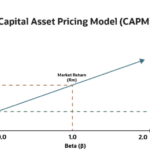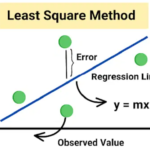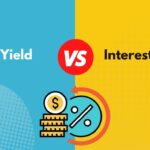
By ATGL
Updated March 2, 2025
When planning your investment strategy, you likely focus on maximizing returns while minimizing potential losses. However, one often overlooked challenge is reinvestment risk — the possibility that you won’t be able to reinvest cash flows at the same rate of return as your original investment. This risk can significantly impact your portfolio’s long-term performance and requires careful management.
What Is Reinvestment Risk?
Reinvestment risk refers to the probability that an investor will be unable to reinvest cash flows (such as coupon payments or returned principal) at a rate comparable to the current investment’s yield. This risk becomes particularly relevant when interest rates fall, forcing investors to reinvest at lower rates and potentially reducing their expected returns.
Unlike systematic risk, which affects the entire market, reinvestment risk is more closely related to unsystematic risk as it can be partially managed through proper investment strategies. While it primarily affects fixed-income securities like bonds, it can impact any investment that generates regular cash flows.
For example, if you own a 10-year bond paying 5% annually, but interest rates drop to 3% after five years, you’ll face reinvestment risk when trying to reinvest those coupon payments. The new, lower rate environment means your overall yield will decline over time.
Factors Contributing to Reinvestment Risk
Interest Rate Fluctuations
Interest rate changes represent the primary driver of reinvestment risk. When rates fall, reinvested cash flows earn less than the original investment, potentially creating a significant gap between expected and actual returns. Conversely, rising rates can benefit you by allowing reinvestment at higher yields, though the principal value of existing fixed-income investments may decline.
The Federal Reserve’s monetary policy decisions, economic growth patterns, and inflation expectations all influence interest rate movements, making these factors important considerations when assessing reinvestment risk.
Market Conditions
Broader market conditions significantly impact reinvestment opportunities. During economic downturns, central banks often lower interest rates to stimulate growth, increasing reinvestment risk for income-focused investors. Additionally, market volatility can limit available investment options during crucial reinvestment periods.
Market liquidity — the ease with which assets can be bought or sold without affecting their price — also plays a role. In illiquid markets, finding suitable reinvestment opportunities at favorable rates becomes more challenging.
Characteristics of Underlying Securities
The specific features of your investments can either amplify or reduce reinvestment risk:
- Maturity length: Longer-term securities typically expose investors to greater reinvestment risk due to the extended period during which rates might change.
- Payment frequency: Investments with more frequent payments (monthly vs. annual) increase exposure to reinvestment risk as they create more instances where cash flows need to be reinvested.
- Callable provisions: Callable bonds allow issuers to redeem them before maturity, typically when interest rates fall, forcing investors to reinvest at lower prevailing rates.
Companies with high retention ratios (retaining earnings rather than paying dividends) may help you avoid some reinvestment risk, as these companies reinvest profits internally rather than distributing them to shareholders.
Strategies to Manage Reinvestment Risk
While reinvestment risk cannot be eliminated, several strategies can help mitigate its impact on your portfolio.
Laddering Bond Maturities
Bond laddering involves purchasing bonds with staggered maturity dates, creating a sequence of bonds that mature at regular intervals. This strategy reduces reinvestment risk by diversifying across different time periods, ensuring that only a portion of your portfolio faces reinvestment at any given time.
For example, instead of investing $50,000 in a single 10-year bond, you might allocate $10,000 each to bonds maturing in 2, 4, 6, 8, and 10 years. As each bond matures, you can reinvest in a new long-term bond, maintaining the ladder structure while capturing current rates.
Diversification of Investments
Diversifying across different asset classes, industries, and investment vehicles helps reduce overall portfolio risk, including reinvestment risk. By holding investments with varying cash flow patterns, interest rate sensitivities, and maturity dates, you can minimize the impact of reinvestment challenges in any single segment of your portfolio.
Consider incorporating both fixed and variable-rate securities, as well as investments with different payment frequencies and maturity profiles. This approach ensures that not all of your cash flows will need to be reinvested under the same market conditions.
Utilizing Predictable Cash Flow Investments
Some investment options are specifically designed to address reinvestment risk:
- Zero-coupon bonds: These bonds don’t pay periodic interest, eliminating the need to reinvest coupon payments and thus removing reinvestment risk for those payments.
- Bullet strategy: This approach involves purchasing bonds that all mature at approximately the same time, suitable when you anticipate needing a specific sum at a future date.
- Target-date funds: These automatically adjust their asset allocation as they approach a target date, potentially reducing reinvestment concerns for retirement planning.
When evaluating these strategies, consider your investment timeline, income needs, and risk-reward ratio to determine the most appropriate approach for your situation.
Examples of Reinvestment Risk
Scenario of Fixed-Income Securities
Consider an investor who purchased a 20-year bond paying 6% annually in 2010. Every year, this bond generates coupon payments that need to be reinvested. However, following the financial crisis, interest rates remained historically low for many years.
By 2015, when reinvesting coupon payments, the investor might only find comparable bonds yielding 3-4%. This significant difference means that over the bond’s remaining life, the investor’s actual return would be substantially lower than the expected 6% when initially purchased. This example demonstrates how changing interest rate environments can dramatically impact long-term investment outcomes.
Impact of Callable Bonds
Callable bonds present a particular reinvestment risk challenge. When interest rates fall, bond issuers often exercise their call option to retire higher-interest debt and reissue bonds at lower rates.
For example, if you purchase a 7% callable corporate bond and interest rates drop to 5%, the issuer will likely call the bond. You’ll receive your principal back but face reinvesting in a lower-yield environment. This scenario represents a double challenge: losing the higher-yielding bond while simultaneously facing limited high-yield reinvestment options.
Some investors attempt to mitigate this risk by seeking call protection periods or demanding higher yields for callable bonds to compensate for the additional risk.
Making Informed Investment Decisions
Successfully navigating reinvestment risk requires a comprehensive understanding of your financial goals, time horizon, and risk tolerance. By recognizing how reinvestment risk might affect your specific investment strategy, you can make more informed decisions and implement appropriate mitigation techniques.
Consider consulting with financial professionals who can help you analyze your portfolio’s exposure to reinvestment risk and develop personalized strategies. Their expertise can be invaluable in creating an investment approach that balances current income needs with long-term growth objectives while managing various risk factors.
Join our membership program at Above the Green Line for exclusive insights, expert analysis, and comprehensive resources designed to help you build a more resilient and profitable investment portfolio.






